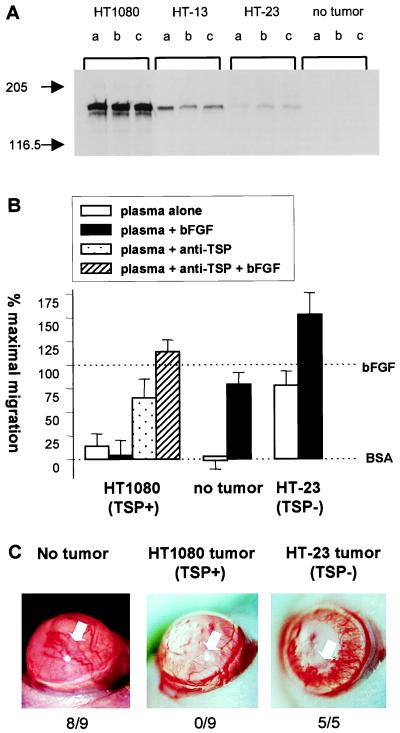Figure 1.
Systemic effects of tumors producing TSP-1. (A) Nude mice bearing tumors derived from cells producing various amounts of TSP-1 were examined for human TSP-1 levels present in plasma of tumor-bearing animals by Western analysis. Letters denote individual animals and cells that gave rise to tumors are indicated above each set of samples. (B) In vitro angiogenic activity of the plasma of tumor-bearing animals. Plasma of animals bearing no tumor or tumors derived from HT1080, producing high levels of TSP-1, or from HT-23, producing negligible levels of TSP-1, were tested for the ability to inhibit the migration of capillary endothelial cells toward bFGF in the presence and in the absence of neutralizing anti-TSP-1 antibodies. Data is presented as percent (%) of maximum migration, with 0% set to background levels (BSA) and 100% to the migration toward bFGF. The 100% varied in these experiments; between 43 and 87 cells migrated per ten high powered fields. When tested alone the antibodies did not influence basal or induced migration. (C) Ability of tumor-bearing animals to mount an angiogenic response. Hydron-sucralfate pellets containing bFGF were implanted in the avascular cornea of untreated mice (Left) or of mice bearing tumors formed by parental HT1080 (Middle) or by HT-23 (Right). Note vigorous vessel ingrowth on Left and Right only. Total positive responses/number of implants are tallied below pictures. White arrow indicates position of pellet.

